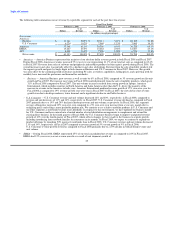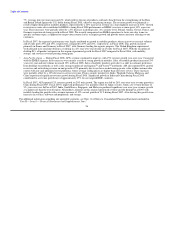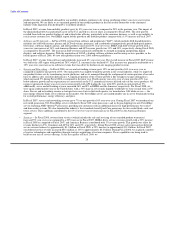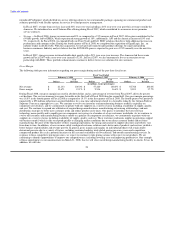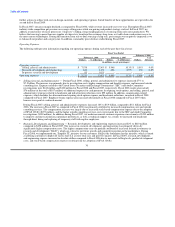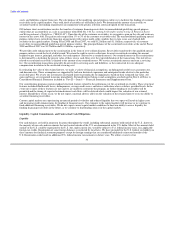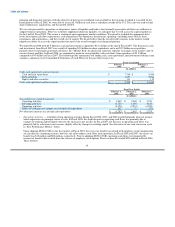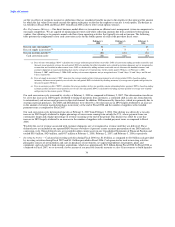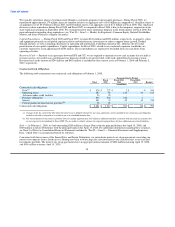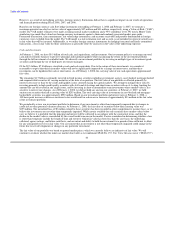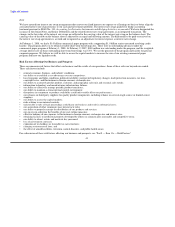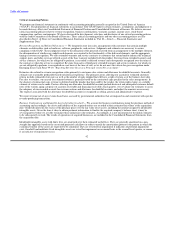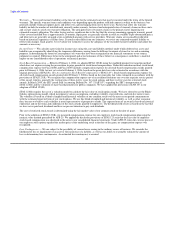Dell 2007 Annual Report Download - page 38
Download and view the complete annual report
Please find page 38 of the 2007 Dell annual report below. You can navigate through the pages in the report by either clicking on the pages listed below, or by using the keyword search tool below to find specific information within the annual report.
Table of Contents
assets and liabilities separate from ours. The sole purpose of the qualifying special purpose entities is to facilitate the funding of customer
receivables in the capital markets. Once sold, these receivables are off-balance sheet. We determined the amount of receivables to
securitize based on our funding requirements in conjunction with specific selection criteria designed for the transaction.
Off-balance sheet securitizations involve the transfer of customer financing receivables to unconsolidated qualifying special purpose
entities that are accounted for as a sale in accordance with SFAS No. 140, Accounting for Transfers and Servicing of Financial Assets
and Extinguishment of Liabilities, ("SFAS 140"). Upon the sale of the customer receivables, we recognize a gain on the sale and retain an
interest in the assets sold. The gain on sale ranges from 1% to 3% of the customer receivables sold. The unconsolidated qualifying special
purpose entities have entered into financing arrangements with various multi-seller conduits that, in turn, issue asset-backed debt
securities in the capital markets. During Fiscal 2008 and Fiscal 2007, we sold $1.2 billion and $1.1 billion, respectively, of customer
receivables to unconsolidated qualifying special purpose entities. The principal balance of the securitized receivables at the end of Fiscal
2008 and Fiscal 2007 was $1.2 billion and $1.0 billion, respectively.
We provide credit enhancement to the securitization in the form of over-collateralization. Receivables transferred to the qualified special
purpose entities exceed the level of debt issued. We retain the right to receive collections for assets securitized exceeding the amount
required to pay interest, principal, and other fees and expenses (referred to as retained interest). Our retained interest in the securitizations
is determined by calculating the present value of these excess cash flows over the expected duration of the transactions. Our risk of loss
related to securitized receivables is limited to the amount of our retained interest. We service securitized contracts and earn a servicing
fee. Our securitization transactions generally do not result in servicing assets and liabilities, as the contractual fees are adequate
compensation in relation to the associated servicing cost.
In estimating the value of the retained interest, we make a variety of financial assumptions, including pool credit losses, payment rates,
and discount rates. These assumptions are supported by both our historical experience and anticipated trends relative to the particular
receivable pool. We review our investments in retained interests periodically for impairment, based on their estimated fair value. All
gains and losses are recognized in income immediately. Retained interest balances and assumptions are disclosed in Note 6 of Notes to
Consolidated Financial Statements included in "Part II — Item 8 — Financial Statements and Supplementary Data."
Our securitization programs contain standard structural features related to the performance of the securitized receivables. These structural
features include defined credit losses, delinquencies, average credit scores, and excess collections above or below specified levels. In the
event one or more of these features are met and we are unable to restructure the program, no further funding of receivables will be
permitted and the timing of expected retained interest cash flows will be delayed which would impact the valuation of our retained
interest. Should these events occur, we do not expect a material adverse affect on the valuation of the retained interest or on our ability to
securitize financing receivables.
Current capital markets are experiencing an unusual period of volatility and reduced liquidity that we expect will result in higher costs
and increasing credit enhancements for funding of financial assets. Our exposure to the capital markets will increase as we continue to
fund additional financing receivables. We do not expect current capital market conditions to limit our ability to access liquidity for
funding financing receivables in the future, as we continue to find funding sources in the capital markets.
Liquidity, Capital Commitments, and Contractual Cash Obligations
Liquidity
Our cash balances are held in numerous locations throughout the world, including substantial amounts held outside of the U.S.; however,
the majority of our cash and investments that are located outside of the U.S. are denominated in the U.S. dollar. Most of the amounts held
outside of the U.S. could be repatriated to the U.S., but, under current law, would be subject to U.S. federal income taxes, less applicable
foreign tax credits. Repatriation of some foreign balances is restricted by local laws. We have provided for the U.S. federal tax liability on
these amounts for financial statement purposes except for foreign earnings that are considered indefinitely reinvested outside of the
U.S. Repatriation could result in additional U.S. federal income tax payments in future years. We utilize a variety of tax
34



